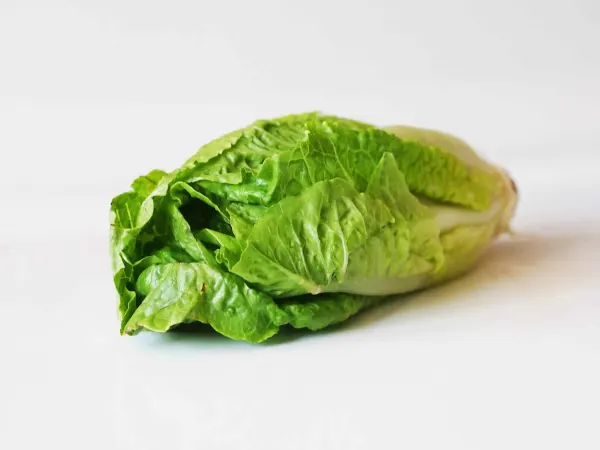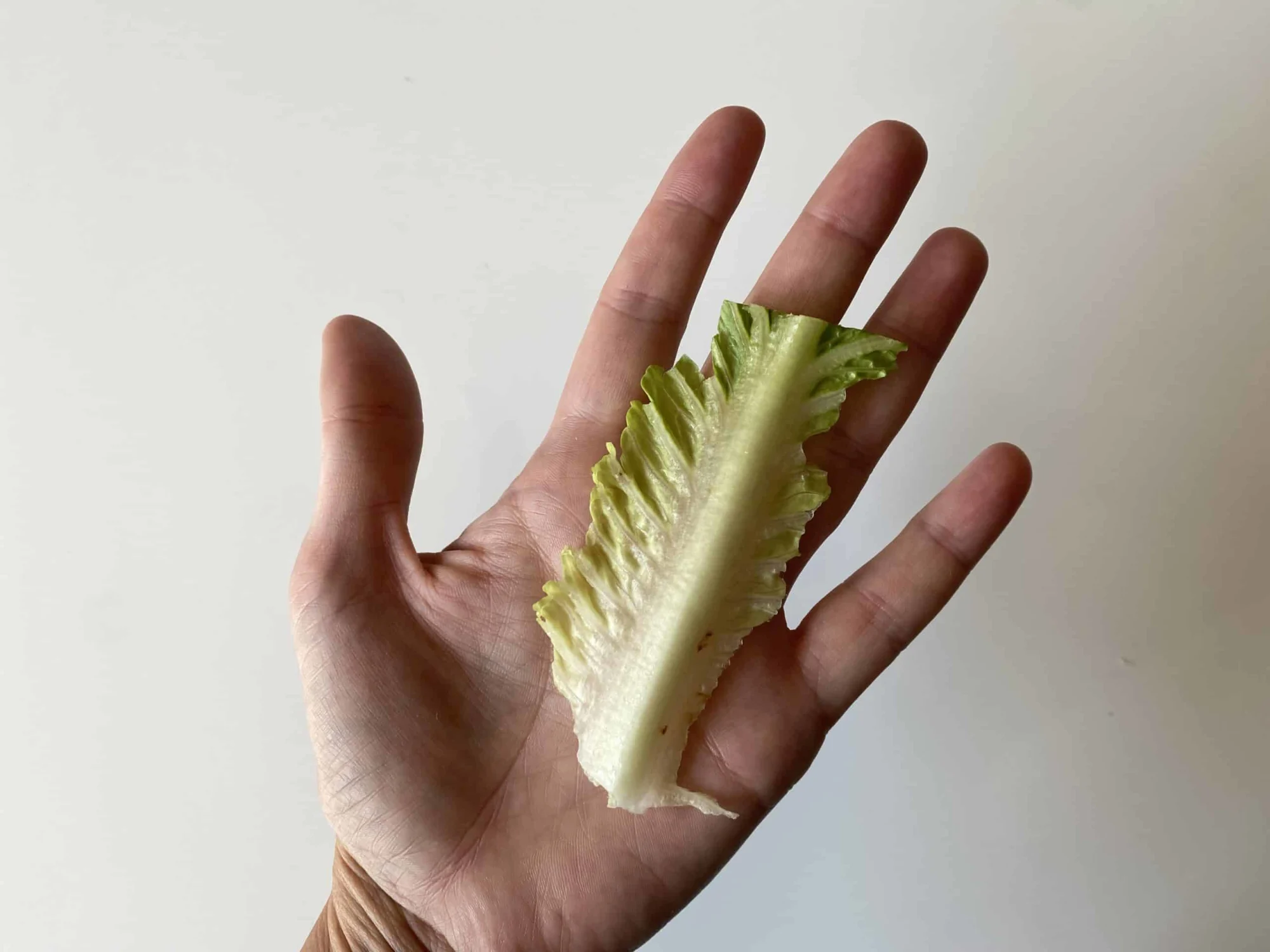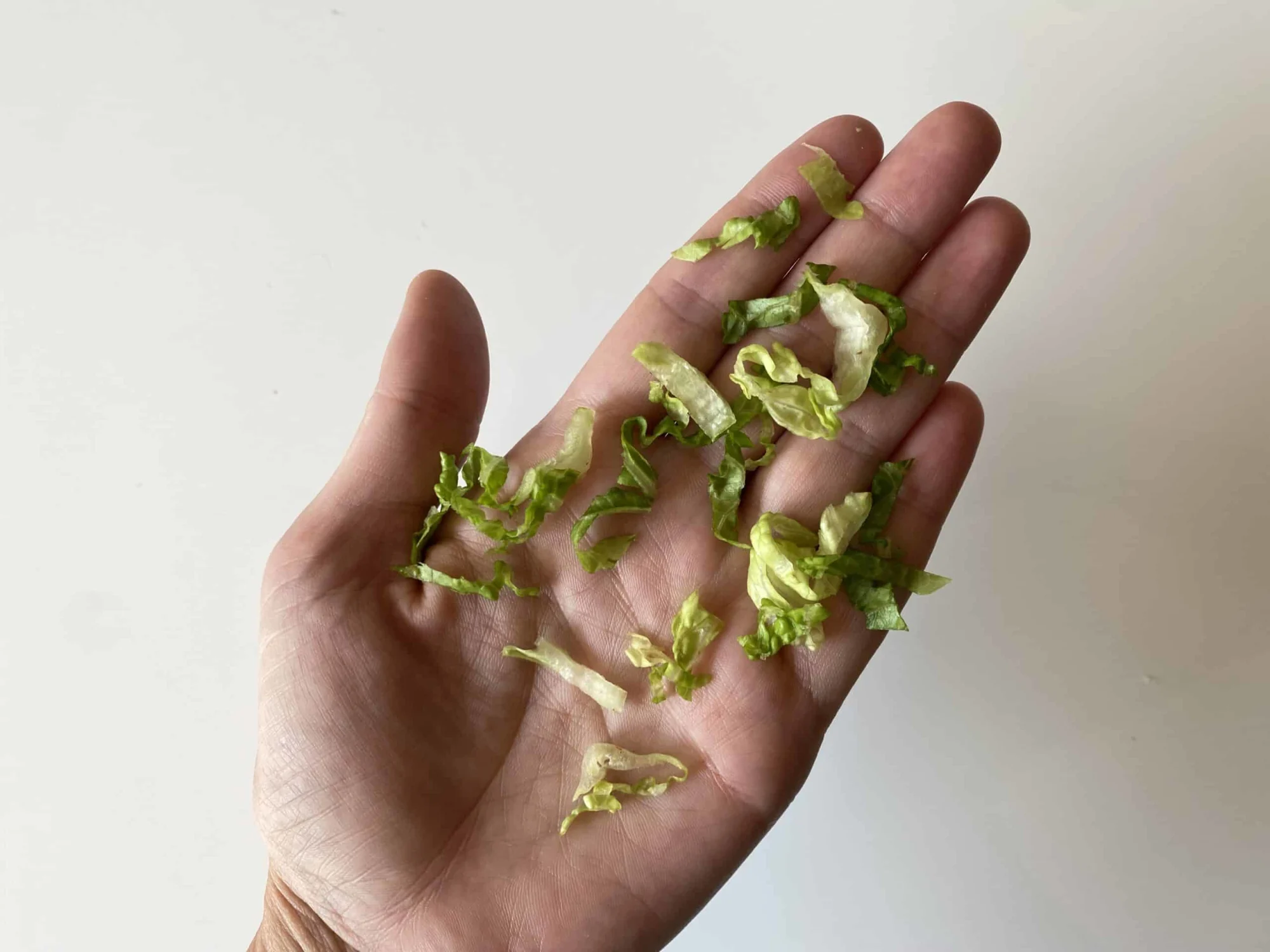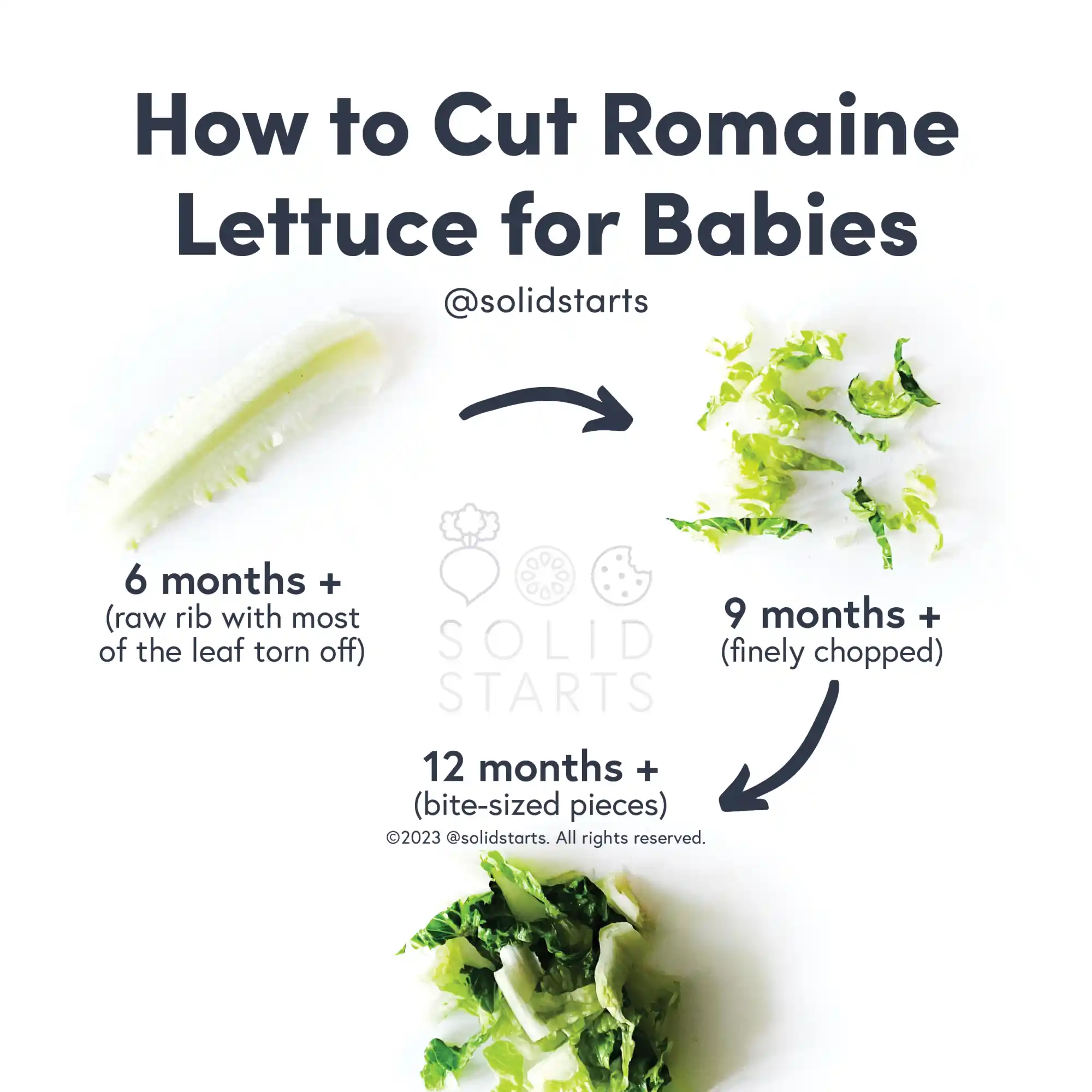Access our First Foods® Database in the Solid Starts App.
Learn moreRomaine
Vegetable
Age Suggestion
6 months
Iron-Rich
No
Common Allergen
No

When can babies have romaine?
Romaine may be introduced as soon as baby is ready to start solids, which is generally around 6 months of age. That said, chewing and swallowing lettuce can be tricky for the youngest eaters, so check out our serving suggestions by age.
How do you introduce romaine to babies with baby-led weaning?
Every baby develops on their own timeline, and the suggestions on how to cut or prepare particular foods are generalizations for a broad audience.
6 months and up:
At this age, baby is not likely to bite, chew, and swallow romaine, but rather munch and teethe on it, which helps develop oral-motor skills. Offer romaine ribs (the thicker, firmer leaf stems that grow from the head’s core) cut into strips, with the flimsy leaf part removed. You can also mix finely-shredded cooked romaine into scoopable foods to encourage self-feeding. Introducing green foods to baby early and regularly can help to prevent picky eating later.
9 months and up:
Offer romaine (from the rib or leafy part) that has been finely chopped to encourage development of the pincer grasp (where the index finger and the thumb meet). Greens often cling to the back of the roof of the mouth of babies and adults alike. Tossing the greens with a homemade dressing can help move along any bits that may get stuck. You can also offer a small amount of water in an open cup to help wash them down. Alternatively, you can continue to offer large romaine leaves for biting and tearing practice.
12 months and up:
Serve bite-sized pieces of romaine (either the rib or leaf) as finger food or alongside a utensil, or offer a whole leaf. Eat alongside the child to model how it’s done, and if your toddler refuses the greens, try not to apply pressure, and don’t write off the food entirely. Keep in mind, toddlers cannot learn to taste or enjoy foods that aren’t offered to them, so even if you don’t think your toddler will explore a salad or other dish with leafy greens, serve them some anyway so they can get used to it being a part of their meal.


How to prepare romaine for babies 6 months+
How to prepare romaine for babies 9 months+
Learn how to interest kids in trying new foods in our guide, 25 Ways to Help Kids Taste Proteins & Vegetables.
Videos
Is romaine a common choking hazard for babies?
No, romaine is not a common choking hazard, though small shreds of romaine carry a risk of aspiration (when food or fluid accidentally enters the airway but does not block it). Romaine and other leafy greens often cause gagging and coughing if the leaves cling to baby’s tongue or the roof of their mouth. Offer a drink in an open cup to help baby wash any pieces of food down. As always, make sure to create a safe eating environment and stay within an arm’s reach of baby during meals. For more information on choking, visit our sections on gagging and choking and familiarize yourself with the list of common choking hazards.
Is romaine a common allergen?
No, allergies to romaine and other lettuce varieties are rare, though when they do occur, they can be severe. Individuals with lettuce allergy may be sensitive to lipid transfer proteins in other foods such as peach, cherry, carrot, grape, corn, hazelnut, peanut, and walnut. However, it is not typical for people with lettuce allergy to react to all these other foods. Individuals with Oral Allergy Syndrome (also called pollen-food allergy syndrome), and in particular, those with sensitivities to plane tree pollen, may also be sensitive to lettuce. Oral Allergy Syndrome typically results in short-lived itching, tingling, or burning in the mouth and is unlikely to result in a dangerous reaction. Cooking lettuce may help minimize or eliminate the reaction.
As you would when introducing any new food, start by offering a small quantity on its own for the first few servings. If there is no adverse reaction, gradually increase the quantity over future meals.
Is romaine healthy for babies?
Yes. Romaine lettuce offers ample amounts of water and an array of important nutrients for a developing child, including vitamin A, as well as potassium, vitamin K, and fiber. In tandem, these nutrients work to support vision, heart health, healthy blood, and a healthy digestive system.
Romaine may be contaminated with foodborne illness-causing germs, such as E. coli, Salmonella, and Listeria. Wash romaine thoroughly under cold running water (no need for vinegar) before serving or cooking it, and dispose of any romaine that has been recalled by your country’s public health organization.
★Tip: To store romaine lettuce, wrap the greens in a towel and store them in a loosely covered container in the refrigerator. Storing this way minimizes exposure to air and moisture, which speeds up spoiling, and can extend the shelf life by a week or two.
Can romaine help babies poop?
Yes. Romaine is rich in fiber and fluid, both of which support healthy digestion and regular pooping. Remember that pooping patterns can vary significantly from baby to baby. If you have concerns about baby’s pooping, check out our page on knowing when to worry about baby’s poop and, as always, talk to your pediatric healthcare provider.
Where does romaine come from?
Also known as cos lettuce, romaine was first cultivated in the fertile lands connecting Africa, Asia, and Europe many centuries ago. In fact, the name “romaine lettuce” comes from lattuga romana in Italian and laitue romaine in French, both names that hint at the lettuce’s popularity in the Roman empire. Modern romaine is sturdier than other lettuce, with crunchy ribs and slightly bitter leaves. It is grown and eaten worldwide in braises, salads, stews, and stir-fries.
Our Team
Written by
Expert Tips Delivered to Your Inbox
Sign up for weekly tips, recipes and more!
Copyright © 2025 • Solid Starts Inc







